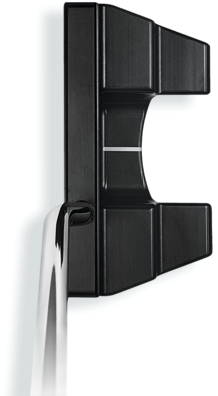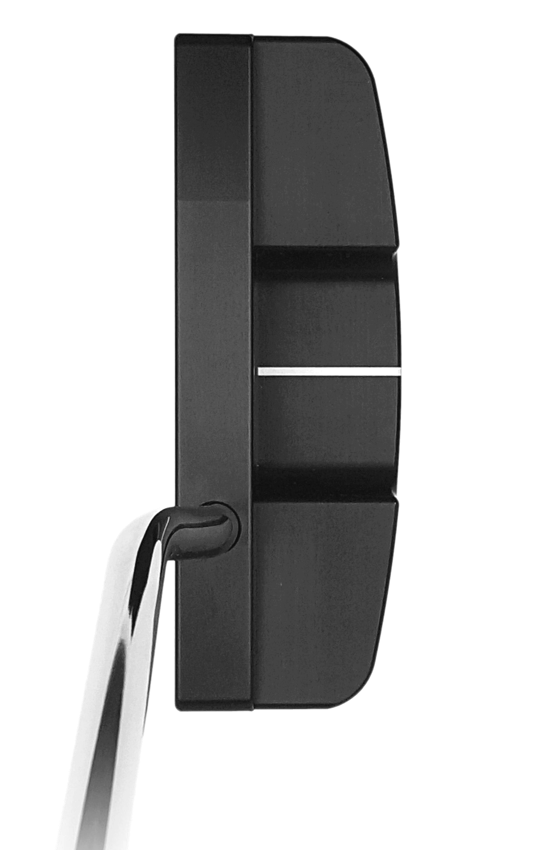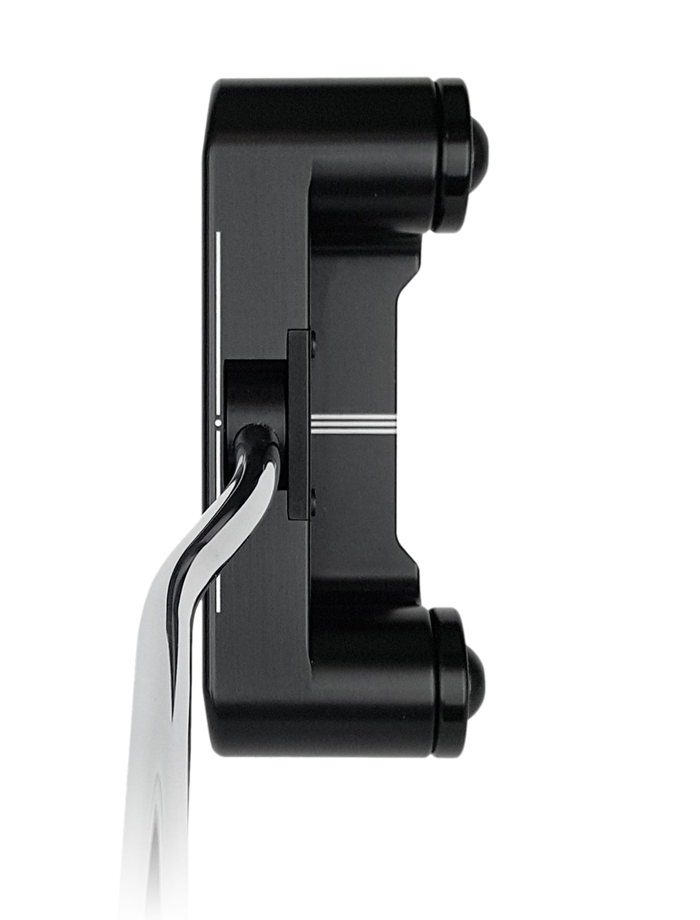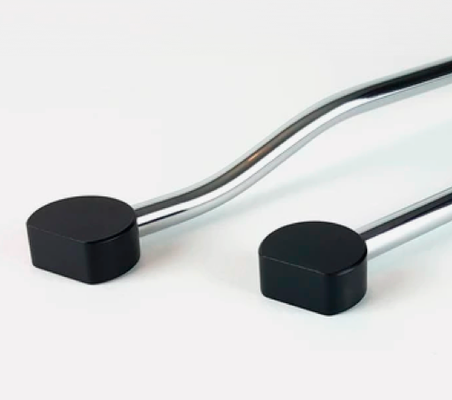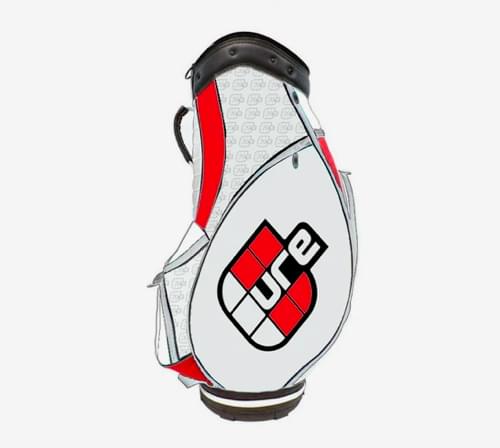The Reports of the Death of MOI have been greatly exaggerated
The SINGLE most direct measure of a putter’s resistance to twisting is MOI
Cleveland Golf introduced their Frontline Putters in September 2019, making claims of a revolutionary new approach to forgiveness that depended on face milling and moving the center of gravity forward nearer the face, discounting the value of MOI. Even promoting the idea that MOI is dead… Ludicrous.
A putter’s moment of inertia (MOI) is its resistance to twisting. Claims of increased stability that are not reflected in MOI are marketing gibberish.
The nut of their claim is that they can restore the distance lost on toe and heel mishits by means of face milling; without depending on MOI at all. It works, sort of. Cleveland calls their version of the face milling Speed Optimized Face Technology (SOFT). Ping has a similar milling pattern that they call TruRoll.

Both of them work on the same principle. The aggressive milling at the center of the face “deadens” the face there, while the smoother face to the toe and heel remain lively (the extreme toe and heel of the Ping pattern is not involved in ball face contact). Cleveland provides data in a published paper documenting about a 6.3% deadening of the of the center hit. Ping’s results would be similar.
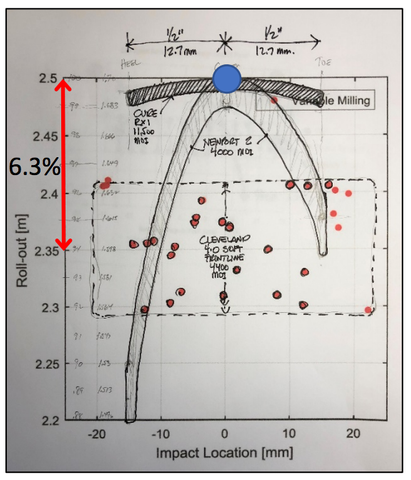
The physics of the ball face interaction at impact includes a significant variation likely related to the dimple effect or at least groove/dimple interactions. Note the variation in roll-out in the Cleveland results from about 2.3 to 2.4 meters (about a 4% variation) – this would be about 15” for a 30’ putt.
Traditional answer style putters like the Newport 2 have a parabolic distribution of roll-out results. The CURE RX5 high MOI putter reduces roll-out variation simply by adding MOI without the variation of center deadening.
The goal of the Cleveland Speed Optimized Face Technology was to flatten the decay in roll out exhibited by low MOI putters like the Newport 2. The resulting pattern is technically “flatter” but is also “FATTER” creating a large and unnecessary variation in distance control that defeats the purpose of the design itself.
CURE achieves a better, flatter result by maximizing MOI. The results with high MOI have less face angle variation and less putter twist at impact.
Increasing MOI with weight optimized fitting improves putter speed variation as an additional benefit along with reducing face angle variation (see 8/3/19 Science Dude Blog on Weight Optimization Fitting). Reports of the death of MOI have been greatly exaggerated.
The Dwell Time of the Ball on the Face of a Putter
The ball is on the face of a putter for a very short time, only about 0.00043 seconds (just under one half of one thousandth of a second). The dwell time can be extended (a little) by a softer ball, softer putter face, or by an aggressive milling pattern on the putter face (including grooves).
Putter Face Twist at Impact in the first one half of a thousandth of a second
All putters twist at impact with an off-center impact. The putter head twists around its center of gravity (COG) until it is restrained by the shaft. The putter continues to twist for well over one thousandth of a second; continuing to twist long after the ball has left the face. Moment of inertia (MOI) is the measure of the putters’ physical resistance to twisting. A low MOI putter will twist more than a high MOI putter from the same off-center impact with the ball.
Quintic Ball Roll Labs USA testing demonstrated that a traditional anser style blade putter with a MOI of about 4000 gcm2 will twist near a full degree on a 0.5” off-center hit; while a high MOI mallet with a MOI of about 11,400 gcm2 twisted only 0.15 degrees. The traditional answer style blade twisted about 600% as much as the extreme high MOI mallet. MOI resists twisting at impact, period!
Reports of the death of MOI have been greatly exaggerated.
Ball Exit Angle from Twist at Impact (away from the intended line)
The ball will leave the putter face on an angle associated with the twist from an off-center impact. A toe hit will push the putt to the right; a heel hit will pull the putt to the left. The geometry involved is simple angle of incidence and angle of reflection; like a billiard ball bouncing off the rail at angle similar to the angle at which it contacted the rail.

All putters twist around the COG of the putter (the red dot above) at impact on an off-center hit regardless of where the COG is placed.
Ball Speed Loss from Twist at Impact
Energy is consumed in the twisting of the putter head in addition to sending the ball off-line. Less energy is transmitted to the ball on the intended line if the putter is twisted by an off-center impact. The measurement of this energy loss is impact ratio (ball speed divided by putter speed).
Quintic Ball Roll Labs USA testing demonstrated that a traditional answer style blade putter with an MOI of about 4000 gcm2 with a center-hit impact ratio of 1.70 will decay to between 1.53 and 1.62 on a 0.5” off-center hit; while a high MOI mallet with a MOI of about 11,400 gcm2 with a center-hit impact ratio of 1.70 will decay only to 1.68 or 1.69. The traditional anwser style blade would lose over 3 FEET on a 30’ putt where the extreme high MOI mallet would only lose only about 2 INCHES. Remember, variable face milling varies distance 15” on a 30’ putt without human variation in putter speed, this is NOT control. MOI resists twisting at impact and maintains impact ratio (distance control), period!
Reports of the death of MOI have been greatly exaggerated.
Gear Effect Spin (the dirty little secret of deep mallets)
Gear effect spin is created by the interaction between the ball and face of the putter. The lateral displacement of the contact point while the face is in contact with the ball causes the ball to spin. The diagrams below exaggerate the twist of the putter head dramatically to demonstrate the principle.
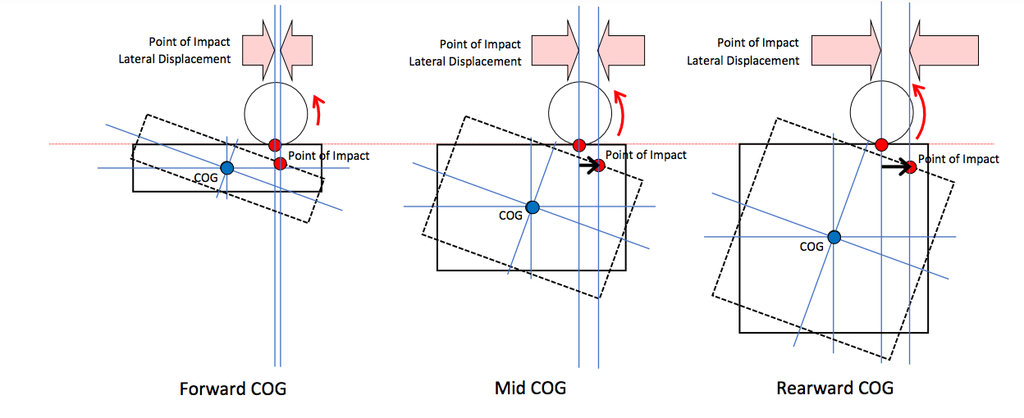
The rearward location of the COG on larger four-corners weighted mallets necessarily increases gear effect spin on off-center hits. Moving the COG forward will reduce gear effect spin; but increasing MOI has a much stronger influence on gear effect spin by dramatically reducing the twist itself. As discussed already; conventional putters with a MOI of approximately 4,000 gcm2 twist about 600% more than high MOI putters such as the Cure RX1 with a MOI of 11,400 gcm2 . Cure putters employ a forward COG design as well as industry leading high MOI to directly resist the rotation and reduce gear effect.
Forward COG with high MOI is the REAL answer to combating gear effect spin without sacrificing distance or line control. Reports of the death of MOI have been greatly exaggerated.
Excess Ball Exit Angle from Gear Effect Spin (a very bad bounce)
The gear effect spin on putts behaves very differently from gear effect spin on woods. Hook spin from a toe hit on a wood draws back (in the air) to the intended line of the shot. The same hook spin from a toe hit on a putter (on the green) behaves like right English on a billiard ball and curves to the right. In the case of a putt it essentially jumps or bounces to the right because the spin is largely consumed in the initial contact with the ground.
The initial bounce to the right (on toe-hit putts) adds to the exit angle simply from the twist at impact discussed above. And the excess exit angle from gear effect spin appears to be on the order of 5 times greater than the twist.
Quintic Ball Roll Labs testing showed that mid mallet putter twisted about 0.25 degrees during impact with the ball (about 0.00043 seconds) but the exit angle of the ball was a whopping 1.25 degrees offline (5 times the twist at impact). The excess exit angle can be explained by gear effect spin.
Moment of Inertia is the most powerful influence on putter performance regarding ALL of these issues: A higher MOI putter resists twisting at impact; a higher MOI putter has much more consistent impact ratio over the entire face; a higher MOI putter will dramatically reduce gear effect spin excess exit angle.
Reports of the death of MOI have been greatly exaggerated.

